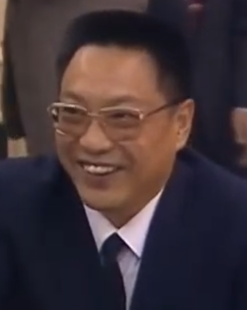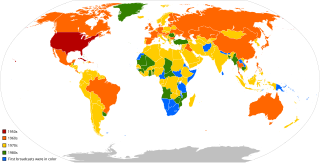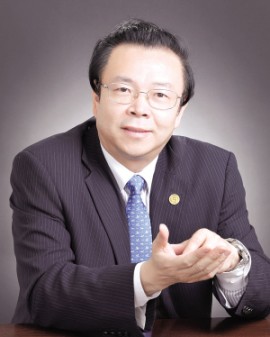Origin and history
In March 1953,the Chinese Welfare Association for the Blind was established in Beijing. The purposes of the Association are:to assist the government in solving problems concerning the blind,to care for the blind and to work for the welfare of the blind. Xie Juezai,Interior Minister of the Government Administration Council of the Central People's Government,served as chairman,Wu Yunfu (伍云甫) and Huang Nai (黄乃) served as vice chairman,and Zhang Wenqiu (张文秋) served as Director-General. [3]
In February 1956,the Chinese Welfare Association for the Deaf was established in Beijing. The purposes of the Association are:to contact the deaf and to work for their welfare. Wu Yunfu (伍云甫),general secretary of the Chinese People's Relief Association,served as chairman. [4]
In February 1956,the Chinese Welfare Association for the Deaf was established in Beijing. The purposes of the Association are:to contact the deaf and to work for their welfare. Wu Yunfu (伍云甫),general secretary of the Chinese People's Relief Association,served as chairman. [4]
On May 30,1956,according to Premier Zhou Enlai's instructions,the Chinese Welfare Association for the Deaf and the Chinese Welfare Association for the Blind began to be directed by the Interior Ministry officially. [4]
On May 20,1960,the Chinese Welfare Association for the Blind and the Chinese Welfare Association for the Deaf merged into the China Association for the Blind and Deaf. [5]
In August 1978,Report on the return of the China Association for the Blind and Deaf's organization and working was approved by the central leadership after the instructions. Afterwards,the Chinese Blind deaf-mute Association immediately returned to work and resumed the publication of the Blind Monthly. [6]
On March 15,1984,the inaugural meeting of the China Welfare Fund for the Handicapped was held in Beijing. [7]
In July 1986,The China Organizing Committee of the United Nations Decade of Disabled Persons was established in Beijing,and the first Organizing Committee meeting was held. The meeting was presided over by Cui Naifu (崔乃夫). Deng Pufang delivered a work report,and the Vice Premier Qiao Shi delivered an important speech at the meeting. The responsibilities and work system of the Organizing Committee and its secretariat were formulated. [8]
On March 11 to 13,1988,the First National Congress of the China Disabled Persons' Federation was held in Beijing. [9]
In December 1990,The 17th meeting of the Seventh National People's Congress Standing Committee examined and adopted the People's Republic of China on Protection of Disabled Persons Act. The Act will come into force on May 15,1991. [10]
On September 4,1994,The sixth FESPIC Games for the Disabled opened in Beijing. Premier Li Peng announced the opening. Deng Pufang presided over the opening ceremony. [11]
On January 14,2011,the China Disabled Persons Rehabilitation Association of the Fifth National People's Congress was inaugurated in Beijing. [12]
On May 15,2011,the China Disabled Persons' Federation and Fujian Film Studio produced the first Special Olympics theme of the film "Special Love" as a tribute film premiere held at Great Hall of the People in Beijing. [13]
On September 15 to 16,2011,co-sponsored by the China Disabled Persons' Federation and Handicap International,the nationwide community-based rehabilitation of international cooperation project workshop held in Beijing. [14]
On October 11,2011,the opening ceremony of the Eighth Chinese National Games for the Disabled was held in Hangzhou. [15]
On December 6,2011,the China Disabled Persons' Federation together with the World Health Organization and World Bank organized the World Disability Report and Community-based Rehabilitation Guide conference at Great Hall of the People in Beijing. [16]
On February 1,2012,the China Disabled Persons' Federation held the recommendations and proposals symposium for 2012 National People's Congress and Chinese People's Political Consultative Conference. On February 21,China Disabled Persons' Federation and China National Radio held the "Cultural Assistive Action Plan" strategic cooperation agreement signing ceremony at the China Braille Library in Beijing. [17]
On November 11,2014,the First Lady of China Peng Liyuan urged China and the UN to support people with disabilities. She also has called for more tolerant,sustainable and just environment for people with disabilities. [18]
On September 28,2015,the First Lady of China unveiled a stamp honoring disabled people that was designed and created by China Disabled Persons' Federation. [19]

















